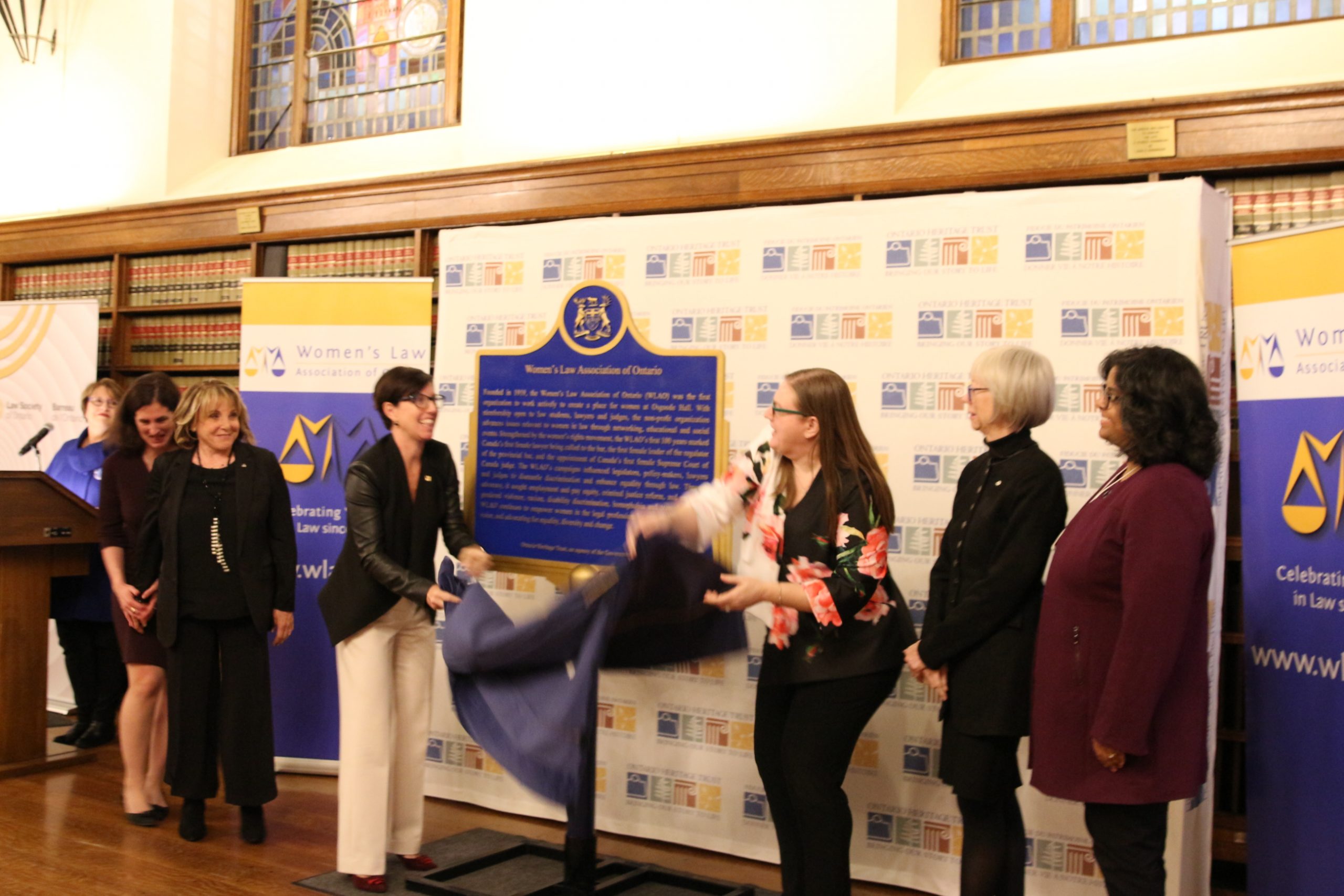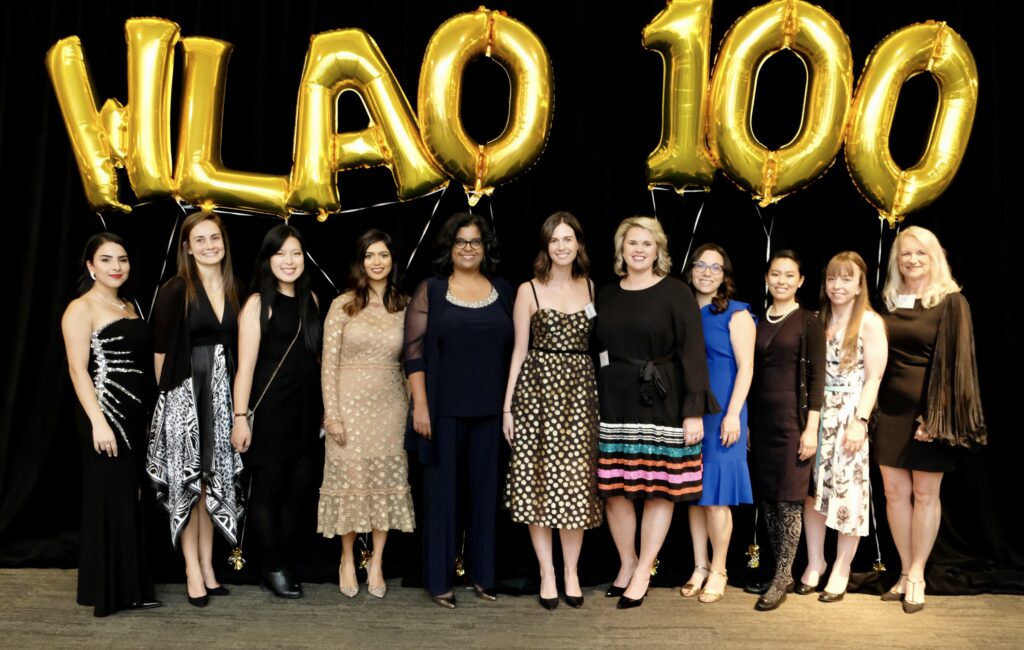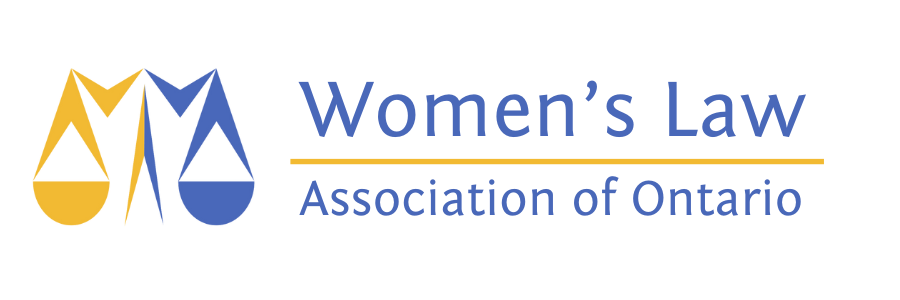
Since 1919, The WLAO has been providing leadership and support to advance the status of women in the legal profession. The WLAO has a rich history in the legal profession with a strong tradition of speaking out for women lawyers.
The main Archives of The WLAO are resting with the Law Society of Ontario.
The WLAO Through the Decades
Past Presidents
The WLAO has been led by remarkable women over the years. They, along with other board members and volunteers, have been instrumental to supporting the equity that women in Ontario’s legal profession benefit from today and from which the organization continues to build.

| Term | Past-President(s) |
| 2020-2022 | Jennifer Gold |
| 2018-2020 | Jacquelyn Stevens |
| 2016-2018 | Shelley Quinn |
| 2014-2016 | Ronda Bessner |
| 2012-2014 | Kathryn Hendrikx |
| 2010-2012 | Sharon Davis |
| 2007-2009 | M. Virginia MacLean,Q.C. |
| 2005-2007 | Elisabeth Sachs |
| 2002-2005 | Elissa Gamus |
| 2001-2002 | Susan Switch |
| 1998-2000 | Barbara Hendrickson |
| 1997-1998 | Sandra Thwaites |
| 1996-1997 | Sandra Thwaites and Lisa Osak |
| 1994-1996 | Celia Hitch |
| 1993-1994 | Mary Duncan |
| 1992-1993 | Rosalind Morrow |
| 1991-1992 | Dana Richardson |
| 1989-1991 | Helene Yaremko-Jarvis |
| 1988-1989 | Sandra Chapnik |
| 1987-1988 | Lynda Tanaka |
| 1985-1987 | Margo Warren |
| 1983-1985 | Margaret Turvey Haig |
| 1980-1983 | The Honourable Justice Tamarin Dunnet |
| 1978-1980 | Mary Maloney |
| 1977-1978 | Judith Hendy |
| 1975-1977 | Pat Drozdoski |
| 1973-1975 | Rainey Hunter |
| 1971-1973 | Mary Atkinson |
| 1970-1971 | Colleen Purvis Washington |
| 1968-1970 | Betty Jane Macdonald |
| 1966-1968 | Fern Levis |
| 1964-1966 | Laura Legge |
| 1963-1964 | Noreen Stevens |
| 1962-1963 | June Bushell |
| 1960-1962 | The Honourable Madam Justice Van Camp |
| 1957-1959 | Mabel Van Camp |
| 1956-1957 | Joy Kennedy Clarry |
| 1955-1956 | Belva Gordon Gibson |
| 1954-1955 | Lorna Ireland McWilliams |
| 1951-1953 | Lily Sherizen |
| 1949 | Honorary President, Judge Helen Kinnear |
| 1949-1951 | Margaret Baird Campbell |
| 1948-1949 | Beatrice Lyons |
| 1945-1947 | Mary Frawley Lamont |
| 1943-1945 | Eileen Mitchell Thomas |
| 1942-1943 | Marion Darte |
| 1941-1942 | Elva Dunn |
| 1939-1940 | Margaret Perney |
| 1938-1939 | Jean O’Rourke |
| 1936-1937 | Elizabeth Maclennan |
| 1933-1934 | Apha Hodgins |
| 1932-1933 | Margaret Fraser |
| 1931-1932 | Margaret E. Perney |
| 1930-1931 | Grace Hunter |
| 1929-1930 | Marion James Lamey |
| 1928-1929 | Vera Robinson Cartwright |
| 1926-1927 | Vida Harris Grover and Elizabeth Newton |
| 1923-1924 | Verona Taylor |
| 1921 | Vida Harris Grover |
| 1920 | Geraldine Robinson Wright |
| 1920 | Vida Harris Grover |
| 1919-1920 | Laura Denton Duff and Helen Currie |
